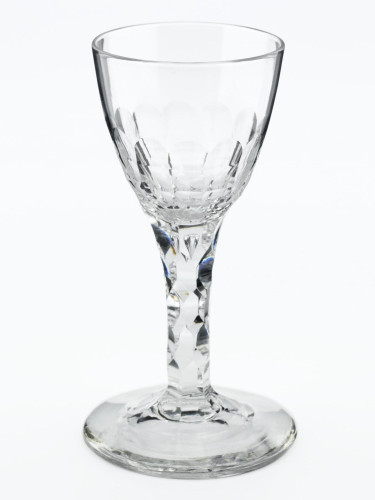7/2009
Collection
Glass
Brief description
Wine glass with a tulip-shaped bowl cut with hexagonal facets and containing a small tear on the stem, made in England c.1780-1785.
Object name
wine glass
Object number
7/2009
Production date
c.1780-1785 (manufactured)
Production place
England (manufactured)
Period
Georgian (1714-1837)
Material
glass
Technique
blown
cut
cut
Physical description
Wine glass with cut hexagonal facets on the stem, which contains a small tear. The tulip-shaped bowl has facet cut decoration around the lower half. The foot of the glass has been cut, and has a pontil mark. The glass has a green tinge.
Dimensions
Height: 13.3cm
Diameter: 6.9cm
Diameter: 6.9cm
Website keywords
serving drink
Label
Label text for ‘Keeping House’ case, Information Bay 1, Geffrye Museum, object added to display July 2011:
Wine glasses with air-twist, opaque twist and facet cut stems (left to right), 1750-70
The stems of glasses were decorated using techniques brought to London by Venetian glass-makers. The ‘air twist’ (left) was technically the easiest to achieve, and was relatively commonplace by the 1750s, shortly followed by the opaque twist (middle). The facet cut stem (right) became popular near the end of the century. This decoration was technically demanding and gave a brilliant result, particularly in candlelight.
Wine glasses with air-twist, opaque twist and facet cut stems (left to right), 1750-70
The stems of glasses were decorated using techniques brought to London by Venetian glass-makers. The ‘air twist’ (left) was technically the easiest to achieve, and was relatively commonplace by the 1750s, shortly followed by the opaque twist (middle). The facet cut stem (right) became popular near the end of the century. This decoration was technically demanding and gave a brilliant result, particularly in candlelight.

